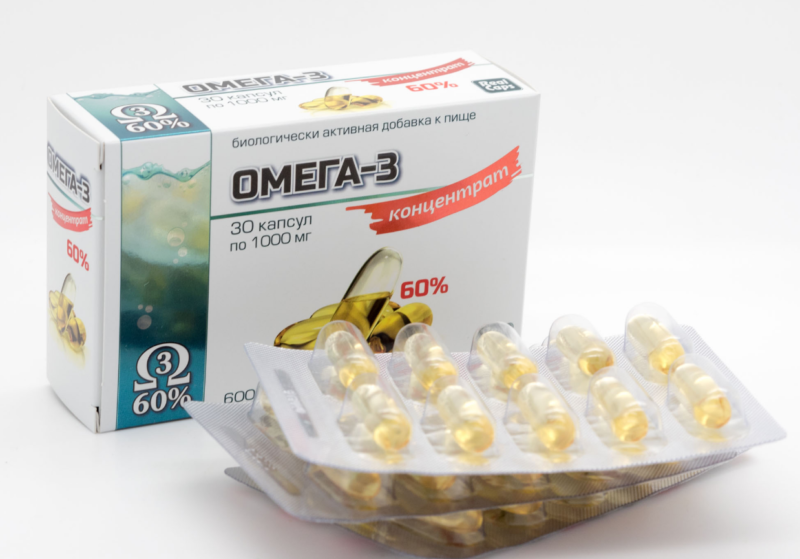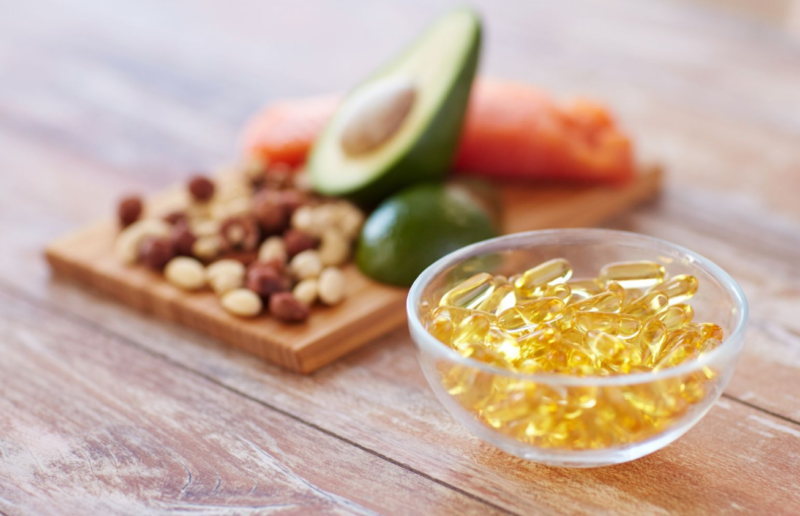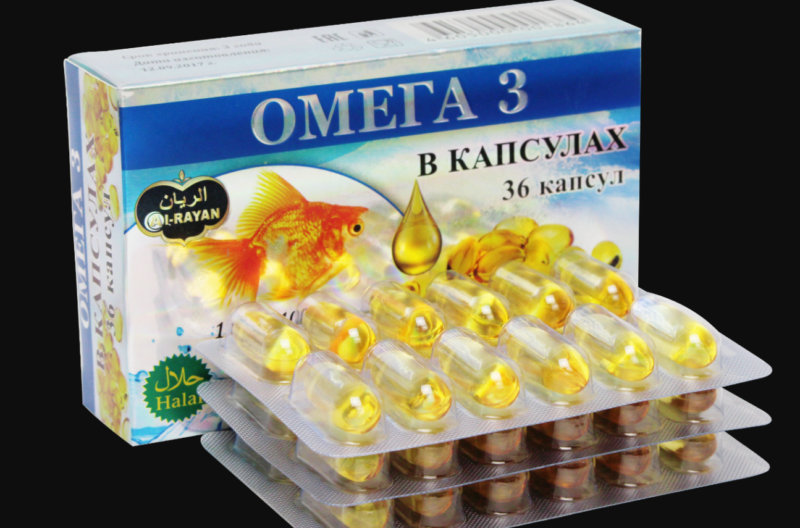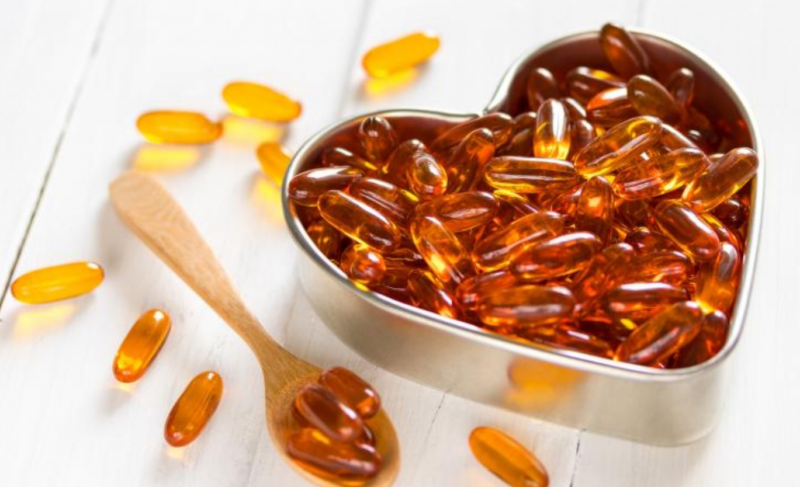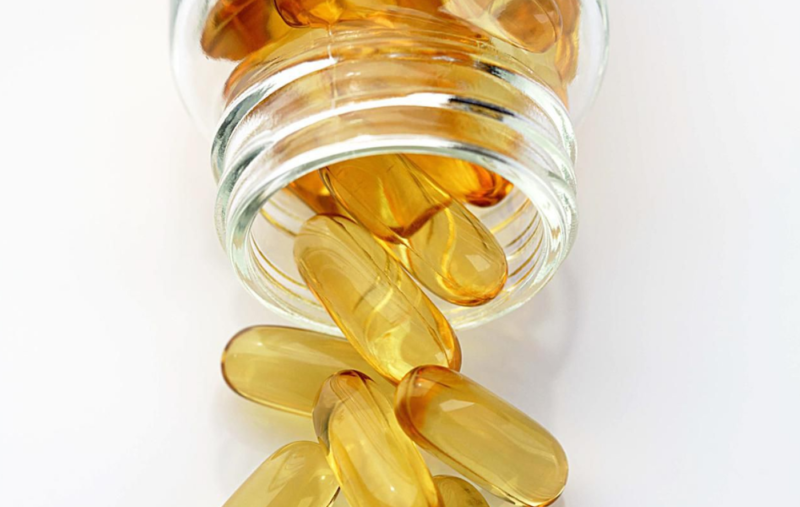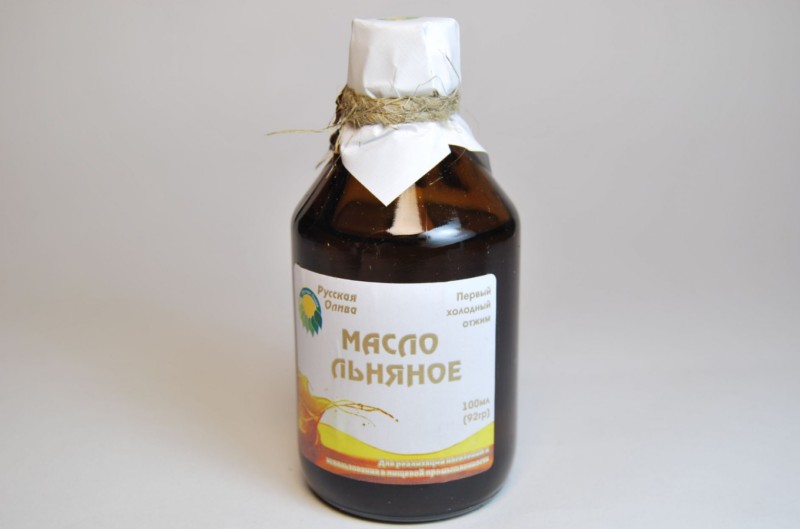There are substances without which the human body simply cannot function. Some of them are synthesized in himself, but some must come from outside - with food, they are called essential. This also applies to polyunsaturated fatty acids, one of which is omega-3.
Material Content:
- 1 The chemical composition of Omega-3
- 2 Daily rate of polyunsaturated fatty acids
- 3 Why is it useful to take a lipid-lowering agent
- 4 Omega-3 Drug List
- 5 Instructions for use and dosage
- 6 During pregnancy and lactation
- 7 Contraindications, side effects and overdose
- 8 Flaxseed oil or fish oil - which is better
The chemical composition of Omega-3
The composition of the element is quite complicated. From the point of view of chemistry, these substances, and their whole complex, belong to the class of polyunsaturated fatty acids - PUFAs. They have a double, i.e. unsaturated bond.
The following acids are classified as omega-3s:
- alpha-linolenic (ALA);
- eicosapentaenoic (EPA);
- docosahexaenoic (DHA).
These are not all representatives of this class of chemicals, but they are the most important for the human body.
Daily rate of polyunsaturated fatty acids
In their pure form, PUFAs are not found in nature, but Omega-3 is found in some products of animal and vegetable origin, and in the latter there are fewer, and the composition of acids is poorer.
What you need to use so that the body does not suffer from a lack of this valuable substance:
- Fatty fish: salmon, but caught in natural reservoirs, and not artificially grown, and other species of red fish.
- Slightly less Omega-3 in fish with white meat - mackerel, sardines, halibut, mackerel, sardinella, smelt, herring, herring and hamsa. They are much more affordable. You need to choose a freshly frozen product, not salty - excess salt is harmful.
- There are PUFAs in shrimp, mussels, crabs, cod liver, pollock roe, scallops, oysters, and wakame seaweed.
- Among the products of plant origin, we can distinguish those where there is a lot of fat: nuts - walnuts, cashews, pecans, pinecones, pistachios.
- There are omega-3s in the seeds: flaxseed, sesame, mustard, chia, rape, hemp, pumpkin. It is rich in oils derived from this raw material, as well as olive. All oils must be fresh - the beneficial lipids contained in them are quickly oxidized.
- You can enrich your diet with PUFAs found in some types of cabbage - Brussels sprouts, cauliflower and broccoli. They are in legumes - beans and soy, in greens - spinach, dill, parsley, vegetable purslane, cilantro. A small amount of omega-3 is present in potatoes.
To ensure daily needs, a person needs from 1 to 2.5 g of PUFA, the value depends on age and gender. Their excess is harmful - a safe dose is up to 8 g per day. But this applies to medicines. Products containing omega-3 can be consumed without restriction. To obtain the physiological norm of these valuable substances, it is enough to eat 100 g of red fish per day, a handful of nuts or a couple of spoons of olive oil. Plant foods will need more.
There are diseases and conditions that require increased intake of omega-3 in the body:
- depression and autoimmune diseases;
- increased sports loads;
- oncology and atherosclerosis;
- risk of heart attack or stroke, problems with the cardiovascular system.
More PUFA is required in the winter. Omega-3 is preferably of animal origin.
Why is it useful to take a lipid-lowering agent
First, we will figure out what role do PUFAs play in the body:
- DHA is present in many organs — the retina of the eye, all cell membranes; it is found in the tissues of the brain, testes, and sperm cells. With its lack, the nervous system of infants simply cannot be formed correctly.
- Thanks to EPA, cell membranes are regenerated, lipid transport in the bloodstream is normalized, absorption of fats in the digestive tract, it is an antioxidant.
- ALA is responsible for the health of the skin, hair and nails, fights stress, lowers cholesterol, lowers blood pressure, and is the material for the synthesis of other fatty acids - DHA and EPA.
Omega-3 is useful for improving the condition of many organs and systems, regardless of age and gender:
- she is a participant in all cellular biomechanical reactions, starting the synthesis of eicosanoids - tissue hormones;
- helps supply tissue with oxygen;
- this lipid-lowering agent reduces the content of saturated lipids in the blood, reducing the risk of developing atherosclerosis and the diseases associated with it;
- enhances myocardial contractility, is responsible for the elasticity of blood vessels;
- promotes the production of serotonin - the hormone of joy, thereby combating depression and the effects of stress;
- reduces pain in inflammation of the joints of any etiology;
- increases insulin sensitivity;
- improves brain functions responsible for learning, memory, attention;
- reduces appetite, promotes muscle growth, while the fatty layer decreases;
- increases body stamina:
- reduces various inflammations, strengthens immunity.
But there are times when omega-3 is especially needed.
Women
Skin aging with its regular intake slows down. The condition of hair and nails improves. Women take omega-3s when they want to conceive a child - it enhances the reproductive function of the body. It is also necessary for those who suffer from painful menstruation - unpleasant sensations will weaken. PUFAs are a good way to prevent breast cancer.
You will need the drug during menopause too - it will smooth out hormonal disorders and related symptoms: hot flashes, depressed mood, sweating and headache.
Men
Omega-3 is involved in sperm formation.It is simply necessary for men who want to become fathers, since unsaturated lipids also help the production of male sex hormones. The lack of DHA is one of the causes of prostatitis and other problems with the prostate gland.
For children
In a child’s diet, the amount of omega-3 should be 1% of the weight of all food taken.
In this case, a positive effect will be observed:
- the immune status will return to normal;
- the child will become calmer;
- improve memory and ability to focus, which will positively affect development and academic success.
Omega-3 Drug List
The main component of omega-3 drugs is fish oil, it is the most abundant in it, sometimes krill oil or fats extracted from algae are used. During its processing and purification, PUFAs turn into ethers, but this form is poorly absorbed, so the last stage of drug production is recovery to triglycerides. The Omega-3 complex is available in capsules due to the specific taste of the contents, which not everyone likes. In addition, such a shell protects the drug from oxidation.
Pharmacies have both prescription drugs, such as Omacor, and numerous dietary supplements.
When choosing a drug, attention is drawn to its composition - the content of EPA and DHA, the form in which unsaturated lipids are presented, the degree of purification and the expiration date.
The most popular are:
- Solgar - produced in a dosage of 700, 900 and 1300 mg, extracted from hamsa and mackerel;
- Carlson Labs Super Omega-3 Gems with a dosage of 1200 mg, extracted from tissues of deep-sea fish;
- Omega-3 Doppelherz Asset - made from salmon fish;
- Omega-3 Vitrum Cardio - contains all three major PUFAs;
- Omega-3 Aquamarine - contains Vitamin E;
- Omega-3 Norvesol - a high-purity preparation from seal fat;
- Omega-800 is a fish oil preparation.
For children, omega-3 capsules are not always suitable - it is difficult for them to swallow, therefore it is better to stop on syrups or chewing lozenges. Most often, omega-3 for children is prescribed in the form of the following drugs:
- Pikovit Omega-3 - a syrup containing PUFA and a complex of vitamins, is prescribed from 3 years.
- Multitabs Omega-3 - chewable capsules or syrup with water-soluble vitamins.
- Chewing marmalade with fish oil.
- Tutti-Frutti - chewable capsules with the addition of fish oil.
Instructions for use and dosage
Instructions for use indicate that the drug is taken for at least 3 months. It is better to do this after consulting a doctor. The dosage depends on the age and concentration of the active substance in each specific medicine.
The standard intake for adults and children after 12 years is 3 capsules three times a day. For children under this age, 1 capsule with the same frequency of use is enough. You need to drink them immediately after eating. Drink only with water, ½ cup is enough.
During pregnancy and lactation
Adequate intake of omega-3s is important throughout pregnancy.
With its lack, problems arise both in the developing baby and in the mother:
- the risk of miscarriage increases, premature birth may occur;
- in the last trimester of pregnancy, late toxicosis is possible, fraught with edema, kidney damage, hypertension;
- the baby may suffer the nervous system, the development of bones, organs of vision, after birth, immunity will be weakened.
Postpartum depression is often due to a lack of serotonin, the production of which is regulated by PUFA.
Omega-3 is also important during the feeding of the baby so that his nervous system develops without deviations.
Contraindications, side effects and overdose
Not everyone can take omega-3s.
It will have to be abandoned in the following diseases:
- active tuberculosis;
- sarcoidosis;
- increased bleeding of blood vessels;
- acute inflammation in the digestive tract, including the pancreas;
- insufficient liver or kidney function if not compensated.
You can not combine the drug with the intake of vitamins E or D - they can enhance the effect of each other. An absolute contraindication is intolerance to the components of the drug - allergic reactions are possible. Usually, omega-3 is well tolerated even with prolonged use, it is dangerous only to exceed the prescribed dose.
Overdose is manifested by the following symptoms:
- poor appetite;
- nausea, and sometimes vomiting;
- intense thirst;
- constipation or diarrhea;
- abdominal pain
- muscle weakness;
- frequent urination;
- headache.
If you accidentally drink a large dose of medicine, you should rinse your stomach and call an ambulance.
Flaxseed oil or fish oil - which is better
Flaxseed oil, since it is a plant product, contains less active alpha-linoleic acid. In order to make more active eicosapentaenoic and docosahexaenoic acid from it, the body will have to work hard. The degree of such a transformation is small - no more than 21%. In fish oil, these acids are already contained. Therefore, linseed oil cannot completely replace fish oil, in order to obtain more active and beneficial unsaturated lipids for the body, the body must develop special enzymes, and EPA and DHA are well absorbed without them.


